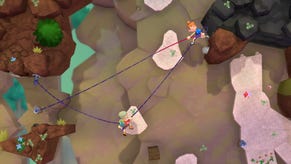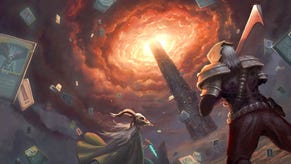Crackdown As You've Never Seen It Before
A technical retrospective with HD video.
In the first of our technical retrospectives, Digital Foundry takes a look at Crackdown on Xbox 360. Two years on from its release, it remains an intriguing game: still state-of-the-art in some respects, but superseded by competitors in several others. It's also fair to say that from a gameplay perspective, it remains one of the single most wonderful games you can play on Xbox 360. A brand new copy can be bought for a pittance now, so if you're a newcomer to the Microsoft console, it's a must-buy.
Going behind the scenes of the game is a relatively straightforward procedure. We know much about how the game works since there's an entire chapter dedicated to its rendering techniques in Wolfgang Engel's book, ShaderX7. But before dipping into Crackdown's technical elements in more depth, let's make good on our headline and proffer up some exclusive video showing the game as you've never seen it before.
In short, it's a video celebration of an open-world game that created the illusion of a densely populated cityscape a full year before the release of Grand Theft Auto IV. By positioning our Agency character across strategically chosen points in the scenery, turning off the HUD and speeding up the capture to 20x real-time, we get to see the Crackdown environments from a new, unique perspective. Crackdown has aged in many respects, but the old girl still manages to acquit itself with some style, even up against newer, more modern games.
For example, there's none of the heavy, ultra-blatant depth of field or blur effects used in inFamous on far-away scenery - Crackdown adopts an atmospheric haze simulation that produces an arguably more pleasing effect. The night-time view of the cityscape at the end of the video exercises the full might of Crackdown's deferred rendering engine (similar techniques are found in GTAIV and Killzone 2, to name but two). In this scene, the engine is processing over 3,000 light sources. All the lights in the city, the lights from the traffic - each and every one of them has a dynamic, real-time effect on the surrounding environments. Another interesting thing to note is that if the light source itself moves off-screen, its effects still remain in the scene. Compare with Killzone 2 - should the light source move out of view, the entire effect disappears too. A similar effect is seen in the CryEngine 3 trailer released at GDC.
Lighting and shadowing are something of a mixed bag. While the actual transitions in the day/night cycle are beautifully handled, shadows cast by the environment appear to be rather static. The reflection of the city into the surrounding water is completely uniform no matter what the time of day is - even relatively unsophisticated open world games like The Godfather 2 make a decent enough fist of casting real time shadows that change as the day elapses, yet despite the huge amount of baked in ambient occlusion shadow-work, the buildings themselves cast no shadows according to the time of day. On the flipside, the cloud cover above clearly has a pleasing, subtle effect on the surrounding environments. Crackdown's artists had control over how the clouds reacted with the ambient lighting, or they could use their own colours, resulting in some of those spectacular day-night cycles. Indeed, even cloud density has an impact on the lighting too.







.jpg?width=291&height=164&fit=crop&quality=80&format=jpg&auto=webp)
